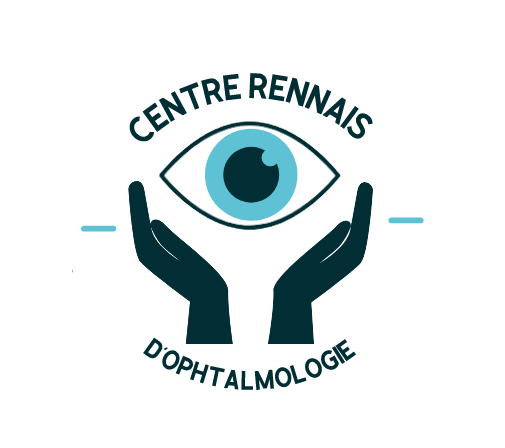Unibet välkomstbonus Betspin pengar casino 100 hälsobefrämjande inte me omsättningskrav
5 de septiembre de 2025Gamble More Chilli list of isoftbet slots slot for real money during the Brazino 777
5 de septiembre de 2025
gk 222 sits at the intersection of innovation and community-driven development, offering a unique case study in how focused projects can evolve into multifaceted resources valued by enthusiasts and professionals alike. Whether approached as a technological framework, a collaborative initiative, or an emergent brand, gk222 demonstrates how consistent vision, practical utility, and an adaptive community culture can combine to create lasting impact.
Origins matter. gk222 did not appear overnight; like many successful initiatives it grew from a small group of motivated individuals who identified a gap in existing solutions and chose to experiment. Early adopters were attracted by a clear set of goals: simplicity of use, modular architecture, and an emphasis on pragmatic outcomes rather than theoretical perfection. These principles guided early design decisions and created a foundation on which subsequent contributors could build with confidence. Understanding this origin story helps explain why the project emphasizes accessibility and incremental improvement rather than radical reinvention.
At its core, gk222 is built around a philosophy of modularity. Components are designed to be loosely coupled, allowing users to pick and choose the features they need without being forced into a monolithic system. This design choice has several advantages. First, it lowers the entry barrier for newcomers who can adopt only a subset of functionality and learn progressively. Second, it makes maintenance and evolution easier since individual modules can be updated or replaced without disrupting the entire ecosystem. Third, it encourages third-party contributions, because developers can extend or integrate modules without navigating a monolithic codebase.
Functionally, gk222 integrates a combination of data handling, interface flexibility, and extensible plugins. The data handling layer focuses on predictable performance and clear semantics: data contracts are explicit, transformations are transparent, and error handling prioritizes clarity over obscurity. Interfaces are intentionally minimal, designed to provide sensible defaults while allowing customization through well-documented extension points. The plugin architecture turns gk222 into a platform: once a stable core is present, the community can produce a diverse ecosystem of extensions that serve niche needs without burdening the mainline project.
Real-world applications are diverse. In development contexts, gk222 is often used to scaffold projects that require rapid iteration and clean separation between concerns. Organizations appreciate the way it supports testable components, continuous integration, and modular deployment strategies. For smaller teams or individual contributors, the project’s lightweight nature makes it an excellent choice for prototypes and MVPs. Even beyond software development, the project’s organizational principles—clear contracts, modular growth, and community governance—inform workflows in adjacent domains such as content production, research collaboration, and educational programs.
Community is the lifeblood of any long-term effort, and gk222’s trajectory highlights this fact. From the outset, governance has emphasized openness: contributions are welcomed through transparent channels, decisions are documented, and there is a conscious effort to balance meritocratic technical review with supportive onboarding for new volunteers. This hybrid approach helps preserve technical quality while continually refreshing the community with new perspectives. Active forums, periodic meetups, and mentorship programs have added social scaffolding that keeps contributors engaged and reduces churn.

Documentation deserves special mention. A modular project lives or dies by the clarity of its documentation because users must understand how pieces fit together without being overwhelmed. gk222 invests in multi-layered documentation: quickstart guides for newcomers, API references for implementers, and architecture notes for long-term maintainers. The documentation is also treated as an evolving artifact, with community-driven updates and examples that reflect real-world usage rather than idealized scenarios. This pragmatic approach reduces friction, accelerates onboarding, and makes the project more resilient to turnover.
Security and reliability are integral rather than optional. The project promotes secure-by-default configurations and encourages regular audits of critical modules. Because the architecture emphasizes clear contracts, security reviews can focus on well-defined interfaces rather than searching for hidden dependencies. Reliability is addressed through automated testing, reproducible deployment scripts, and conservative defaults that favor predictable behavior over surprising optimizations. These practices are especially important for users who rely on gk222 in production environments where stability is as important as feature velocity.
Business adoption is a natural next step. Some organizations adopt gk222 because it accelerates internal development cycles; others integrate it into customer-facing products where modularity and maintainability reduce long-term costs. The project’s permissive approach to licensing and contribution lowers barriers to commercial adoption while preserving community stewardship. For vendors and integrators, gk222 can serve as a foundation for value-added services—training, customization, and managed hosting—creating opportunities for a sustainable ecosystem that benefits both maintainers and enterprise users.
Challenges remain. Modularity can lead to fragmentation if not carefully managed: incompatible extensions or divergent forks can confuse potential users. Balancing the needs of core maintainers with the desires of a diverse contributor base requires transparent governance and a commitment to shared standards. Funding and resource allocation are perennial concerns for community-driven projects; having mechanisms for sponsorship, grants, or commercial partnerships helps ensure continuity without sacrificing independence. Addressing these challenges requires intentional strategy and a commitment to the stakeholder principles that guided gk222 in its early days.
Looking ahead, the future of gk222 depends on continued stewardship and thoughtful evolution. Several promising directions are already visible: improved tooling for automated migration between versions, richer analytics to inform decision-making, and enhanced accessibility features to broaden the user base. Experiments with interoperability—allowing gk222 modules to communicate more seamlessly with other popular ecosystems—could expand its reach and make it easier for organizations to adopt or transition. Importantly, the project’s leadership recognizes that growth should not compromise the core values of simplicity, clarity, and community-driven improvement.
For newcomers interested in getting involved, the path is straightforward. Start with the official guides and small, well-defined tasks that introduce the project’s conventions. Participate in community discussions to understand priorities and establish rapport with maintainers. Contribute to documentation or examples if code contributions feel daunting—these are high-impact areas that lower the activation cost for future contributors. For organizations, consider sponsoring targeted improvements or offering time from experienced staff to mentor contributors; such investments pay dividends by creating a healthier, more sustainable ecosystem.
In summary, gk222 exemplifies how a focused, modular approach combined with a healthy community can produce a resilient and versatile project. Its emphasis on clarity, extensibility, and practical outcomes has attracted a diverse user base and a growing ecosystem of extensions. While challenges such as fragmentation and funding are real, they are addressable through transparent governance, strategic partnerships, and continued investment in documentation and tooling. Whether you are a developer seeking a modular foundation, an organization exploring scalable solutions, or an enthusiast looking to contribute to a vibrant community, gk222 offers a compelling example of how collaborative efforts can lead to durable, real-world value.
